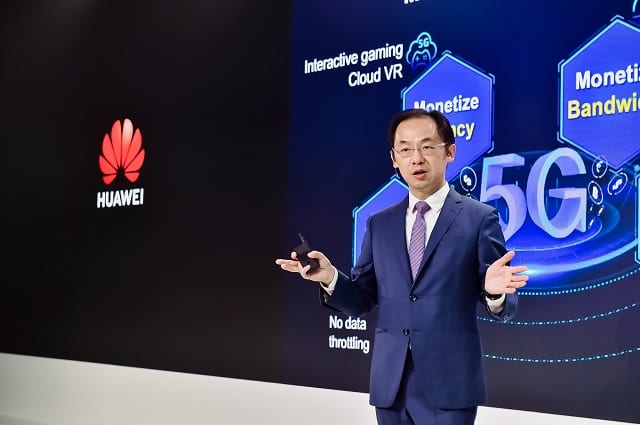Huawei said today at a London launch event for new 5G gear that it would prefer to go via the operator community to serve the Industry 4.0 movement, using slices of their licensed public networks to create dedicated networks for industrial automation and intelligence.
It follows the line from Swedish rival Ericsson, to go through its traditional networking customers as it seeks to thread the industry with wireless connectivity. Nokia, the other of the big three kit vendors in the traditional telecoms market, has been more aggressive, stating it will go direct as required – although it has also toed the operator line more recently.
Speaking during a roundtable session at a product launch in London, where the Chinese vendor proclaimed its tech leadership and unveiled new innovations for 5G radio, core, and transport networks, the company said operators are best to serve the enterprise set using new 5G slicing and edge computing mechanisms.
Ryan Ding, executive director of the board and president of Huawei’s carrier business group, said: “The most efficient approach is to allocate spectrum to operators. That has been our view, and it has not changed. 3GPP already has two key technologies for private networks. The first is network slicing. The second is multi-access edge computing. With these two, we will be able to slice a part out from the public 5G network to serve enterprises. This is the most efficient approach to serve enterprises.”
At the same time, the firm said it will go direct if enterprises are adamant they want to keep operators out of their private network operations. “As telecom provider, our global strategy is to advocate spectrum allocation to operators… [But] as long as enterprises want to buy equipment from us, we won’t say no,” said Ding.
Among a flurry of innovations revealed in London (check-out the write-up here), Huawei trailed its new FlexE-based 5G slicing solution, afford industry-beating slicing precision of 1 Gbps, according to its author.
“This is five times the industry average,” the company stated. It means best-effort IP networks can be transformed into “SLA-committable IP networks”, which cut can independent slices on the IP network for high value services – “like a dedicated lane on the road so emergency vehicles can pass traffic jams”, explained Peng Song, president of marketing and solution sales in Huawei’s carrier group, on stage in London.
In effect, critical communications and high-value industry can, now, rely on operators to underwrite slices of their public networks. “Because today’s IP networks cannot meet the requirements of vertical industries. And vertical industries cannot rely just on best-effort [networks]. They need SLAs to be committed,” he said.
Vodafone, notably, has said mobile operators must take more risk to make more revenue from new customers in the 5G era. The operator community must be prepared to put in place service-level agreements (SLAs) around 5G services offered on network slices to industrial operatives, if they are to win business from the digital transformation of the broad enterprise sector, it has said in these pages.
The new Huawei 5G network solution also utilizes in-situ Flow Information Telemetry (iFIT), meaning faults can be located in minutes and the network is highly available. Song described the mechanism as “like Google Maps”, where network data, like networked devices, is tagged to report latency, traffic status, and any blockages on the road.

